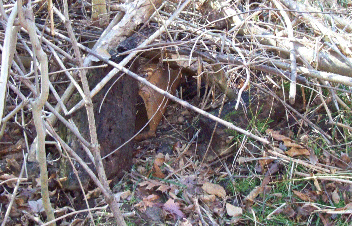|
MAN-MADE RABBIT by Dr. Bruce Gabrielson There have been a number of visitors in recent months ask what the strange looking mounds and tiles were doing in my starting pen. Previous articles have discussed how I design my brush piles and small dens, but I haven’t ever talked about the burrows many of my rabbits use to whelp their litters. This article will describe the larger burrows where rabbits can survive cold winter weather as well as raise their young. The two dens described below are easy to build and several can be created in a couple of hours. I’ve put in about a dozen plus have a couple of friends who have put them in their training areas. They last a long time and are usually well used by the local rabbit population.
I decided to build a box den a couple of years back because in my starting pen there are no other ground-burrowing animals that could provide natural dens for my rabbits. The den is well insulated and works well in flat areas with little other cover. I got the idea for this den from both my friend’s rabbit hutches and some traps that I use.
Basically, rabbits don’t need a lot of room to raise their young. What they
really want is a secure place out of the elements that has enough room for them
to turn around in. What I’ve designed is a box like a rabbit trap that is just
large enough for a rabbit to get into without fear plus have both front and back
entrances. Figure 1 shows a simple box made from 3/8” waterproof plywood using
screws to attach each edge together. Notice that the end of the box has a V
shaped opening.
Next, find
a good location to put the box. I look for a place not too far from water and a
feeder, one that has overhead cover above both entrances, and also one with a
small hill or log along one side. Be sure the location isn’t in a low spot
where water will settle after long rains. If you think water might flood the
box, build the ground up under it as dampness will nearly always kill young
rabbits.
I should mention one more thing. While rabbits may go into the box on their
own, I usually sprinkle some rabbit feed in front of the den for a couple of
days plus scrap some of the dropping from the ground inside my feeder and
sprinkle it around the front as well. In a few days you will notice the box is
being used.
As with
the wood box, find a location with some cover above both ends of the box,
preferably along a tree or hillside. Put a piece of roofing foil above and
under the tile. Unlike the wood box, this den doesn’t need to be covered with
dirt but can be if you wish. I usually just put a short log on top of the felt
and leave the rest uncovered. Rabbits seem to really like this den even if it
doesn’t look natural.
All articles are the copyrighted
property of the author |
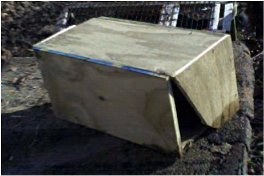 BOX
DENS
BOX
DENS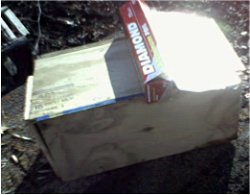
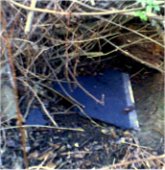 Once you have a location in mind, put a small piece of heavy roofing felt on the
ground, then the box, then a folded piece of roofing felt all around the outside
of the box. Cover this with a small piece of plastic on top.
Once covered, shovel dirt over the box until you have a layer of
about 2-3 inches of dirt on top and the sides are well slopped rather then
steep. The combination of the foil plus the felt prevents the wood from rotting
out for a long time so your rabbits will be comfortable for years to come.
Once you have a location in mind, put a small piece of heavy roofing felt on the
ground, then the box, then a folded piece of roofing felt all around the outside
of the box. Cover this with a small piece of plastic on top.
Once covered, shovel dirt over the box until you have a layer of
about 2-3 inches of dirt on top and the sides are well slopped rather then
steep. The combination of the foil plus the felt prevents the wood from rotting
out for a long time so your rabbits will be comfortable for years to come.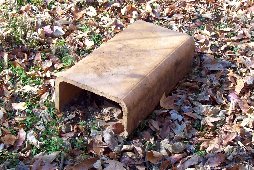 TILE
DEN
TILE
DEN